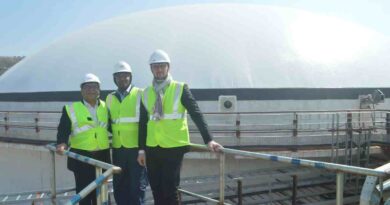Voluntary Carbon Market (VCM) – a beacon of hope in the fight against climate change


While COP 28 focused heavily on the Article 6 saga, a different story unfolded within the energetic ecosystem of the voluntary carbon market (VCM) pavilion. Beyond the headlines and debates, a potent undercurrent of optimism thrummed, highlighting the VCM’s burgeoning potential as a game-changer in the fight against climate change.
The VCM isn’t simply treading water – it’s surging ahead. In 2022 alone, transaction volume skyrocketed 200%, exceeding a staggering $2 billion. This explosive growth stems from a confluence of factors. To begin with, as companies increasingly pledge net-zero emissions, demand for high-quality carbon offsets is soaring. The VCM offers companies a flexible and transparent means to compensate for unavoidable emissions and demonstrate progress towards their sustainability goals.
Moreover, institutional investors are recognizing the VCM’s potential as an asset class, seeing it as a valuable tool for generating returns while contributing to positive environmental impact. This influx of capital further fuels market growth and project development.
Traditionally concentrated in developed economies, the VCM is witnessing burgeoning activity in developing nations. This expansion fosters local economic development, empowers communities, and unlocks previously untapped potential for emissions reduction.
Innovation Unbound: A Crucible for Transformative Solutions
The VCM is not merely a trading floor; it’s an incubator for innovative climate solutions. Beyond the mainstream offset projects of renewable energy and forestry, the market buzzes with ground breaking initiatives.
Nature-Based Solutions: From regenerative agriculture practices to afforestation projects, the VCM embraces nature-based solutions that sequester carbon, enhance biodiversity, and bolster ecosystem resilience.
Technological Advancements: Cutting-edge technologies like direct air capture and biochar sequestration are finding their footing in the VCM, offering novel pathways for permanent carbon removal.
Hybrid Approaches: The market is increasingly witnessing the emergence of hybrid projects that combine traditional methodologies with cutting-edge technologies, maximizing both environmental impact and cost-effectiveness.
Democratizing Climate Action: Empowering Everyone to Participate
The VCM breaks down barriers, enabling individuals and organizations of all sizes to become active participants in climate action. Accessible platforms and transparent pricing mechanisms bring the fight against climate change closer to home, allowing individuals, small businesses, and local communities to contribute alongside large corporations. This inclusivity broadens the base of engagement and fosters a collective sense of responsibility.
Building Bridges, Not Walls: Fostering Collaboration across Borders
The VCM transcends geopolitical divides, fostering collaboration and knowledge sharing on a global scale. It connects project developers in developing nations with investors and buyers across the globe, bridging the gap between ambition and resources. This collaborative spirit fosters sustainable development alongside emissions reduction, creating a win-win scenario for all stakeholders.
A Catalyst for Change: Driving Down Emissions with Private Capital
The VCM possesses the potential to be a game-changer in the fight against climate change. By channelling private capital towards innovative, verifiable emissions reduction projects, it can accelerate the transition to a low-carbon future. This private-sector driven approach complements existing regulatory frameworks and incentivizes rapid development and adoption of cutting-edge solutions.
Addressing Challenges: Building a Robust & Reliable Market
While the VCM’s future is bright, it’s not without challenges. Concerns regarding project additionality, quality, and double counting need to be addressed. Robust carbon accounting protocols, rigorous independent verification systems, and standardized baselines are crucial to ensuring the integrity and effectiveness of the market. Additionally, ensuring equitable access for developing nations and vulnerable communities remains a key priority.
A Bright Future Ahead
The optimism surrounding the VCM at COP-28 stemmed from its inherent dynamism, innovative spirit, and collaborative approach. Its potential to unlock new pathways for emissions reduction, drive sustainable development, and empower individuals and communities is undeniable. As we move forward, supporting the VCM’s continued growth and addressing its challenges becomes imperative. By building a robust, transparent, and inclusive market, we can harness the power of voluntary carbon markets to propel us towards a future where climate action is a collective endeavour, driven by innovation and fuelled by optimism.
(The author deals in carbon-credits and is founder of Climate Notion)




